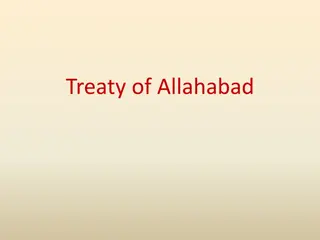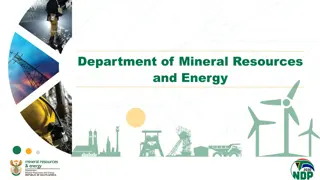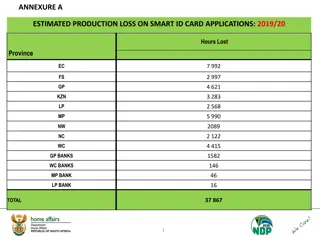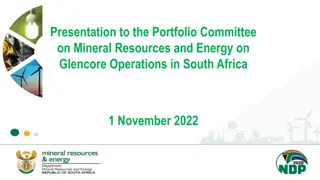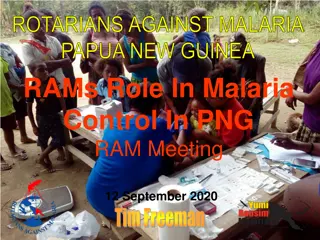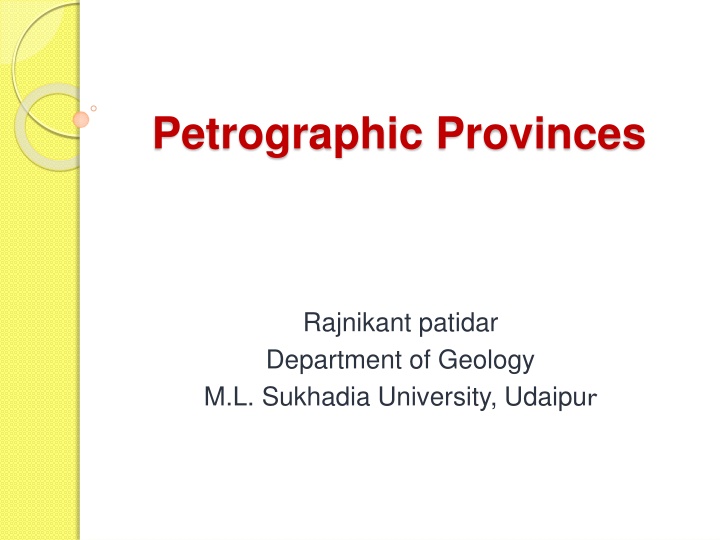
Petrographic Provinces and Their Significance
Explore the concept of petrographic provinces, regions where similar igneous rocks are formed during the same period of activity. Learn about the history, characteristics, and examples of petrographic provinces like the Brito-Arctic Tertiary Province and Columbia River Basalt Group.
Download Presentation

Please find below an Image/Link to download the presentation.
The content on the website is provided AS IS for your information and personal use only. It may not be sold, licensed, or shared on other websites without obtaining consent from the author. If you encounter any issues during the download, it is possible that the publisher has removed the file from their server.
You are allowed to download the files provided on this website for personal or commercial use, subject to the condition that they are used lawfully. All files are the property of their respective owners.
The content on the website is provided AS IS for your information and personal use only. It may not be sold, licensed, or shared on other websites without obtaining consent from the author.
E N D
Presentation Transcript
Petrographic Provinces Rajnikant patidar Department of Geology M.L. Sukhadia University, Udaipur
Definition A broad area in which similar igneous rocks are formed during the same period of igneous activity. Also known as comagmatic region; igneous province. The rocks have a particular chemical or mineral composition, that distinguishes them from the same types of rocks in other regions. province; magma A region in which the various igneous rocks are so related as to indicate origin from a common magma The term Petrographic Province has been applied to any broad region which are most likely related igneous rocks and have been injected or poured out during the same general epoch of igneous activity.
History Vogelsang (1872) was the first to conceive the idea of petrographic province based on petrographic similarities in the rocks of an area. However, the time factor was not discussed. Judd (1986) first used the term Petrographic Province and applied to the rocks of Ireland of Tertiary age. Washington magmatic province. (1906) region introduced instead the term petrographic Co- of
General Characteristics of Petrographic Province The rocks of a provinces are relatively more or less uniform in composition. They were erupted or injected within a specific time period. The rocks of province show certain common chemical characteristics and regularity in variation diagrams. The characteristics of rocks of a province are so noticeable that we can differentiate them from the same types of rocks of other regions. mineralogical, chemical and genetic
Brito-Arctic Tertiary Province The Brito-Arctic province (also known as the North Atlantic Tertiary spreading in NW Britain, Ireland and part of Greenland, extends in 2000 miles. Volcanic Province) It is a major flood basalt province of the North Atlantic Ocean. Basaltic volcanism occurred ~61 million years ago.
Columbia River Basalt Group The Columbia River Basalt Group lies across parts of the Western United States. It is found in the U.S. states of Washington, Oregon, Idaho, Nevada, and California. It is one of the largest flood basalts ever to appear on the Earth's surface covering the area of about 163,700 km2 Age of the rocks is late Miocene and early Pliocene. The Columbia River Basalt Group flows exhibit essentially uniform chemical properties
Central Atlantic Magmatic Province The Central Atlantic magmatic province (CAMP) is a large magma flow formed during the Mesozoic Era, near the end of the Triassic and the beginning of the Jurassic. It constituting a single major flood basalt province. The province is extending from central Brazil to western Africa for 5000 km length. The CAMP is the greatest area known, roughly 11 million km , of any continental. Nearly composition, all CAMP rocks are tholeiitic in
Ontong Java Plateau The Ontong Java Plateau is a huge oceanic plateau located in the Pacific Ocean, lying north of the Solomon Islands. The plateau covers an area of approximately 2,000,000 km2 and reaches a thickness of up to 30 km. The plateau is of volcanic origin, composed mostly of flood basalts. The Ontong Java Plateau was formed 125 120 million years ago
Pliocene province of Otago (New Zealand) The Pliocene province of Otago (New Zealand), occupies 2000 square miles area. It mainly consist of basic volcanic rocks (Alkaline rocks). The age of the rocks of the province is Late Tertiary
Deccan Traps The Deccan Traps are a large igneous province located on the Deccan Plateau of west-central India. It is one of the largest volcanic features on Earth, cover an area of 500,000 km2. The Deccan Traps formed between 60 and 68 million years ago at the end of the Cretaceous period. Within the Deccan Traps at least 95% of the lavas are tholeiitic basalts.
Malani Silicic Province The Malani magmatism represents the largest Precambrian silicic volcanic province on the earth. This largest outcrop of India constitutes more than 50, 000 km2 area in western India. The Malani activity took place between 750-770 Ma post-dating the Erinpura granite and ended prior to Marwar Supergroup sedimentation in the northwestern India. The Malani province is dominated by the silicic volcanics (rhyolites, dacites), popularly known as Malani Rhyolites rhyodacites, trachytes,
Rajmahal Traps The Rajamal Traps is a volcanic igneous province in Eastern India, covering the parts of Jharkhand, West Bengal and Meghalaya. Rajmahal hills of Jharkhand is the type area of this province. This volcanic rocks are formed in the early Cretaceous age. The Original lava flow covered an area of nearly 4,100 km2 . Below the Bengal basin it is stretched in 200,000 km2 The Rajmahal volcanics are predominantly tholeiitic basalt, quratz tholeiite, olivine tholeiite and alkali basalt.

![Read⚡ebook✔[PDF] Blood of the Provinces: The Roman Auxila and the Making of Pro](/thumb/20539/read-ebook-pdf-blood-of-the-provinces-the-roman-auxila-and-the-making-of-pro.jpg)









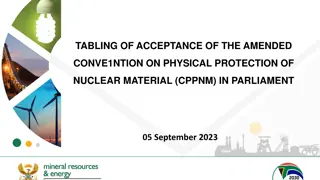
![Stakeholders' Responses to National Health Insurance Bill [B.11B-2019]: Overview](/thumb/69945/stakeholders-responses-to-national-health-insurance-bill-b-11b-2019-overview.jpg)

